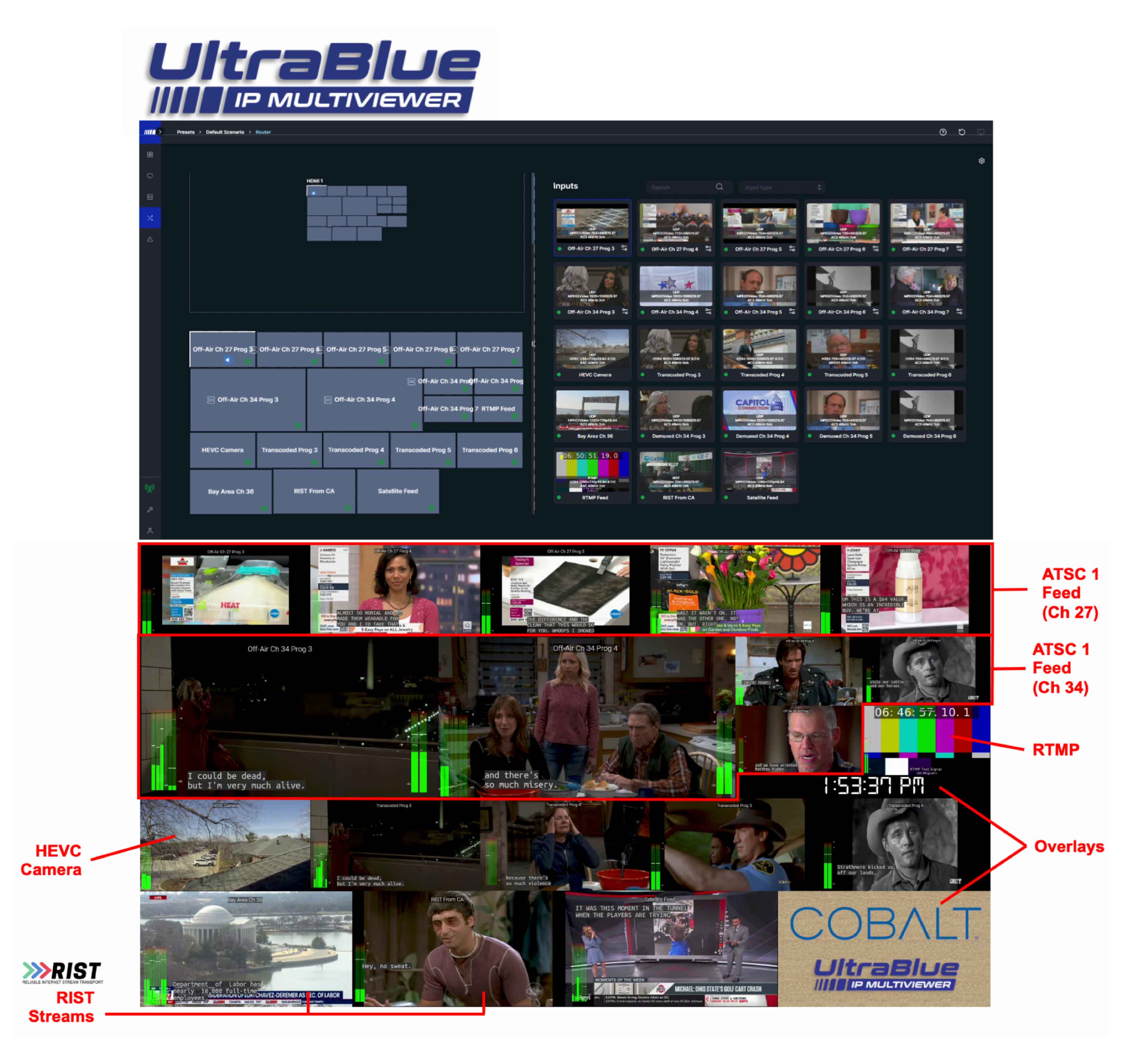SCN: How long have you been with Cobalt Digital, and what are your responsibilities?
Suzana Brady: I joined Cobalt Digital in 2016 when Cobalt purchased ImmediaTV, the company where I held the position of VP of worldwide sales and business development. At Cobalt, I oversee all sales activities and work closely with the executive team to define geographical and technical areas of growth, and implement sales, marketing, and operational strategies. I’m also one of the first members of the RIST (Reliable Internet Stream Transport) Forum and currently serve as its chairperson.
SCN: Because Cobalt supplies both Pro AV and broadcast, you’re the right person to ask: How do you see convergence impacting both industries?
SB: The increasing sophistication of Pro AV applications combined with shifting consumer content consumption preferences are blurring the lines between Pro AV and broadcast. There is growing demand for broadcast-grade solutions that also offer the agility and ease of use required in Pro AV systems in various applications, including corporate communications, education, entertainment, and events. These trends are driving innovation around flexible and scalable workflows as both sectors embrace technologies such as IP (ST 2110) transport, software-defined processing, and remote and cloud production.

SCN: openGear has been around for almost 20 years. How popular are your openGear solutions?
SB: We are very proud to be a founder of the openGear initiative and our cards are very, very popular. Over 1,000 customers worldwide rely on Cobalt products for their most demanding signal-processing applications. The company’s gear is found in major broadcast and cable networks, government agencies, terrestrial and satellite facilities, houses of worship, corporate settings, production environments, mobile operations, ENG operations, TV stations, and even on cruise ships. That said, we also provide solutions in a variety of form factors other than cards, including standalone and software-defined products.
SCN: What’s the secret to creating an effective multiviewer?

SB: It's the ability to remain agile as new formats and protocols emerge—and listening to our customers to make sure we are incorporating the features and functions they need to remain competitive and successful. Our COBALT UltraBlue IP-MV is a perfect example of keeping up with technology as needs change. UltraBlue is a software-based multiviewer for compressed and baseband streams over IP that can also be available as a turnkey server. We’ve recently added support for receiving AVoIP content across a variety of protocols and formats with very flexible audio routing, bringing a multitude of options to suit every application.
The multiviewer’s intuitive web interface incorporates support for compressed and baseband (ST 2110 and/or SDI) inputs and multiple outputs, so it grows along with the customers’ needs. We’ve made mosaic configurations a snap by giving operators the tools to design arbitrary sizes and orientations, graphic overlays, ancillary data, tallies, UMDs, and IDs. PIPs can also be arbitrarily placed and rotated, PIP configurations can be easily copied, and setups can be saved and restored. UltraBlue IP-MV is ideal for Pro AV because it can drive multiple HDMI displays in any orientation (landscape or portrait, selectable per display).
SCN: We’re hearing a lot about ST 2110, and Cobalt is offering products to support it, but why has adoption been so slow?
SB: Adoption has been slow because it is a complicated process with lots of moving parts that must all work seamlessly together. ST 2110 represents a significant shift in infrastructure, workflows, and network design, and requires personnel to either have new skill sets or the ability and nature to be trained. The initial cost and complexity of deployment—coupled with managing high-bandwidth IP traffic—have presented challenges if not actual obstacles, especially for smaller operations. Adoption is accelerating, however, as interoperability improves, and more cost-effective solutions emerge.
The increasing sophistication of Pro AV applications combined with shifting consumer content consumption preferences are blurring the lines between Pro AV and broadcast.
At Cobalt Digital, we’re focused on easing that transition by providing options, such as our COBALT INDIGO factory-installed option, that provides a powerful on and off ramp to and from IP/SDI, offering native ST 2110 capabilities that help customers integrate ST 2110 at their own pace. We’ve also added IPMX support into many of our converters and encoders that brings a plug-and-play ST 2110 experience to the Pro AV community.
SCN: Cobalt has certainly thrown its support behind IPMX. Why is IPMX a good choice for Pro AV signal distribution?
SB: IPMX is a strong fit for Pro AV because it brings the robustness and interoperability of broadcast standards like ST 2110 into AV environments without overhauling the entire infrastructure. Crucially, IPMX provides for plug-and-play simplicity, making it more accessible to those who may not have broadcast engineering resources or experience. IPMX enables Pro AV applications to benefit from IP-based flexibility, scalability, and interoperability without complexity.
SCN: What was the inspiration behind the new ARIA audio monitor family?
SB: A few of our customers had indicated a need for a compact and flexible unit that would be able to manage multiple types of audio sources including SDI, MADI, AES, Dante, and ST 2110, along with the ability to mix and match signals from asynchronous sources. In the truck world, the ARIA audio monitor makes control very simple with POE++ to simplify the connection and, with the conversion of ST 2110 signals to SDI, skip the need for a gateway.
SCN: What new initiatives are we likely to see from Cobalt?
SB: At InfoComm, Cobalt showcased a collection of IPMX-compliant solutions in a variety of form factors to fit every need including all new mini converters, openGear cards and frames, and standalone solutions. Our new ARIA line added an audio monitor, and the SAPPHIRE mini converters and PACIFIC encoders have both been enhanced with new functionalities and support for IPMX. The COBALT WAVE family of routers and control panels are growing with new configurations, and our UltraBlue IP-MV multiviewer series that I mentioned previously has lots of exciting new features. Going forward, we will be adding IPMX support to even more products and expanding our INDIGO line to greater access to ST 2110.
SCN: What’s next for the Pro AV industry?
SB: The Pro AV industry is growing and an exciting place to be as it embraces a future where IP-based, software-defined, and interoperable systems are the norm, not the exception. As the convergence with broadcast continues, we’ll see more adoption of open standards like ST 2110 and IPMX.

